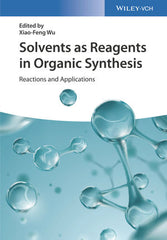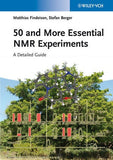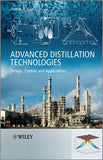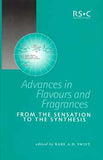Solvents as Reagents in Organic Synthesis: Reactions and Applications
Xiao-Feng Wu (Editor)
September 2017
552 Pages
DESCRIPTION
Clearly structured, the text describes various methods for the activation and reaction of these small molecules, highlighting the synthetic opportunities as well as process-oriented advantages. To this end, all relevant types of solvents are covered separately and emphasized with numerous synthetic examples, while taking care to explain applications so as to avoid undesired side reactions.
The result is a unique resource for every synthetic chemist and reaction engineer in industry and academia working on the methodical optimization of synthetic transformations.
TABLE OF CONTENTS
List of Contributors xiii
1 The Applications ofWater as Reagents in Organic Synthesis 1
Zhengkai Chen and Hongjun Ren
1.1 Introduction 1
1.2 Incorporation of Hydrogen Atom from theWater 2
1.2.1 1,2,3-Triazoles 4
1.3 Incorporation of Oxygen Atom from theWater 7
1.4 Incorporation of Hydroxyl Group fromWater 31
1.5 Traceless Promotion of the Reactions byWater 39
1.6 Conclusions 44
References 44
2 The Applications of Toluene and Xylenes 49
Krishna Nand Singh, Narendra R. Chaubey, and Neetu Singh
2.1 Application of Toluene and Xylenes as Reagents 50
2.2 Oxidation of Methyl Group into Common Functionalities 50
2.3 Application of Methyl Group as Acyl Building Block 51
2.3.1 Synthesis of Carbonyl Compounds 51
2.3.2 Synthesis of Amides 53
2.3.3 Synthesis of N-Aroyl Sulfoximines 54
2.3.4 Synthesis of Esters 55
2.3.5 Synthesis of Thioesters 56
2.4 Application as Alkyl Building Block 60
2.4.1 Synthesis of Nitriles 60
2.4.2 Synthesis of 2-Phenyl Acetic Acid Derivatives 61
2.4.3 Alkylation of Sulfonamides 62
2.4.4 Alkylation ofThiophenols 63
2.4.5 Synthesis of Trifluoromethyl Sulfides 64
2.4.6 Synthesis of Benzyl Esters 64
2.4.7 Synthesis of Phosphate Esters 66
2.4.8 Synthesis of Carbamates,Thioamides, and Esters 66
2.4.9 Synthesis of 3-Benzyl Coumarin Derivatives 66
2.4.10 Decarboxylative Benzylation of Cinnamic Acids 68
2.4.11 Synthesis of Functionalized Oxindoles 68
2.4.12 Synthesis of Dihydroquinolinones 69
2.4.13 Benzylation of Enones 69
2.4.14 Coupling with 1,3-Dicarbonyl Compounds 70
2.4.15 Benzylation of Pyridine-N-Oxide 70
2.4.16 Synthesis of Dihydrofurans 70
2.4.17 Synthesis of Quinoline Derivatives 71
2.4.18 Reaction with Ethyl Diazoacetate 72
2.4.19 Synthesis of Benzo[b]phosphole Oxides 72
2.4.20 Synthesis of β-Aromatic α-Amino Acid Derivatives 73
2.4.21 Halogenation Reactions 73
2.4.22 N-Benzylation of Isoquinolines 75
2.5 Application as Esters Building Block 76
2.6 Application as Alcohols Building Block 77
References 77
3 The Applications of 1,4-Dioxane, THF, and Ethers as Versatile Building Blocks in Organic Synthesis 81
Ping Liu, Guanghui Zhang, and Peipei Sun
3.1 Introduction 81
3.2 Cleavage of C(sp3)–H of Ethers 82
3.2.1 Cross-Dehydrogenative Coupling Reactions of Ethers 82
3.2.1.1 C–C Bond Formation 83
3.2.1.2 C–N Bond Formation 91
3.2.1.3 C–O Bond Formation 93
3.2.2 The Formation of C–S Bond 97
3.2.3 Addition of Ethers to C=C and C≡C Bonds 98
3.2.4 Decarboxylative Alkenylation or Alkylation Reactions 104
3.2.5 Radical Alkenylation and Alkynylation of Ethers 106
3.2.6 Radical α-C–H Hydroxyalkylation and Aminoalkylation of Ethers 107
3.2.7 Intermolecular Carbenoid Insertion to α-C–H Bond of Ethers 109
3.2.8 C(sp3)–H Arylation with Arylmetal or Arylboron Reagents 109
3.3 Cleavage of C–O of Ethers 112
3.4 Cleavage of C–C Bonds of Ethers 117
3.5 Conclusion 118
References 118
4 The Application of Dichloromethane and Chloroform as Reagents in Organic Synthesis 125
Anis Tlili and Johannes Schranck
4.1 The Application of Dichloromethane and Chloroform as Reagents in Organic Synthesis 125
4.1.1 Dichloromethane 125
4.1.1.1 Reactions of Dichloromethane with Posttransition Metals 126
4.1.1.2 Reactions of Dichloromethane with Transition Metals 127
4.1.1.3 Reactions of Dichloromethane with Phosphines 135
4.1.1.4 Reactions of Dichloromethane with Amines and Phosphines 136
4.1.1.5 Reactions of Dichloromethane with Amines 136
4.1.1.6 Reactions of Dichloromethane with Amines and Nucleophilic Carbon Derivatives 139
4.1.1.7 Reaction of Dichloromethane with Nucleophilic Sulfur 141
4.1.2 Chloroform 142
4.1.2.1 Reaction of Chloroform with Hydrogen Fluoride 142
4.1.2.2 Reactions of Chloroform with Post-TransitionMetals 142
4.1.2.3 Reactions of Chloroform with Transition Metals 143
4.1.2.4 Formation and Use of Dichlorocarbene 146
References 154
5 The Applications of Acetone and Ethyl Acetates 161
Jie-PingWan
5.1 Acetone 161
5.1.1 Aldol Reaction 161
5.1.2 Claisen–Schmidt Reaction 167
5.1.3 Mannich Reaction 170
5.1.4 Miscellaneous 175
5.2 Ethyl Acetate 182
5.2.1 Transesterification 183
5.2.2 Amidation 187
5.2.3 Miscellaneous 190
References 192
6 N,N-Dimethylformamide and N,N-Dimethylacetamide as Carbon, Hydrogen, Nitrogen, and/or Oxygen Sources 199
Jean Le Bras and Jacques Muzart
6.1 Introduction 199
6.2 Amination 200
6.2.1 Benzylic and (Hetero)aryl Halides 200
6.2.2 Benzyl and Allyl Acetates 205
6.2.3 Ketones and Aldehydes 206
6.2.4 Azoles 207
6.2.5 Others 208
6.3 Amidation andThioamidation 209
6.3.1 Using the DM DimethylamineMoiety 209
6.3.1.1 Aryl and Alkenyl Halides or Triflates 209
6.3.1.2 Acyl Halides 210
6.3.1.3 Carboxylic Acids, α-Ketoacids, Esters, Peresters, and Anhydrides 211
6.3.1.4 Primary Alcohols and Aldehydes 216
6.3.1.5 Methyl Ketones 217
6.3.1.6 Nitriles 218
6.3.1.7 Dibenzyldisulfanes 219
6.3.2 Using the DM DimethylcarbamoylMoiety 219
6.3.2.1 Aryl Halides 219
6.3.2.2 Ketones 221
Compounds 221
6.3.2.4 Phenols 221
6.3.2.5 Thiophenols 223
6.3.2.6 Alkenes 223
6.3.2.7 Alkynes 223
6.3.2.8 Amines 224
6.3.2.9 Amides 225
6.3.2.10 Nitriles 225
6.3.2.11 Isonitriles 226
6.3.2.12 Benzothiazoles 226
6.3.2.13 Selenides and Sulfides 226
6.3.2.14 Aryl-Tethered Activated Alkenes 227
6.3.3 Using the DM Formyl/Acetyl Moiety 227
6.3.4 Using the DMF Dimethylamino-CarbonMoiety 231
6.3.5 Using CH, CHCONMe2, CH2CONMe2, or H(Me)CONMeCH2 Moiety of DM 233
6.3.5.1 Alcohols 233
6.3.5.2 Aldehydes and Ketones 234
6.3.5.3 Carboxylic Acids and α-Ketoacids 235
6.3.5.4 Amines 235
6.3.5.5 Imides and Amides 236
6.3.5.6 Alkenes 237
6.3.5.7 Sulfides 237
6.3.5.8 (Hetero)arenes 238
6.3.5.9 Domino Reactions 240
6.4 Amidination 241
6.4.1 Sulfonamides 241
6.4.2 Enamines 242
6.5 Formylation and Related Domino Reactions 242
6.5.1 Vilsmeier-Mediated Formylations 243
6.5.1.1 (Hetero)arenes 243
6.5.1.2 Alkenes 245
6.5.1.3 O-Silylated Ethers 246
6.5.1.4 Alcohols and Phenols 246
6.5.1.5 Enamines 247
6.5.1.6 Activated Methyl Groups 247
6.5.2 VR-Mediated Domino Reactions 247
6.5.2.1 Formylation and Cyclization 247
6.5.2.2 Haloformylation 249
6.5.2.3 Haloformylation and Cyclization 250
6.5.2.4 Ring Opening, Haloformylation, and Cyclization 252
6.5.2.5 Diformylation 253
6.5.2.6 Intramolecular Formylation-Intermediate Trapping 254
6.5.3 Using Organolithiens or Organomagnesiens 256
6.5.4 Hydroformylation 258
6.5.5 Formoxylation 259
6.6 Carbonylation 260
6.6.1 Carbonyl from DMF 260
6.6.2 Carbon from DM DimethylamineMoiety 262
6.7 Cyanation 264
6.7.1 Carbon from DMF Carbonyl 264
6.7.1.1 Vilsmeier Procedure 264
6.7.1.2 n-BuLi (or Mg)/I2/NH3 Procedure 265
6.7.2 Carbon from DM Dimethyl 266
6.7.2.1 Pd/Cu Procedure 266
6.7.2.2 Cu Procedure 267
6.7.3 Carbon and Nitrogen from DM Dimethyl 269
6.7.3.1 Pd Procedure 269
6.7.3.2 Cu Procedure 270
6.8 Insertion Reactions 271
6.8.1 Alkenes 271
6.8.2 Alkynes 272
6.8.3 Arynes 274
6.8.4 Imines 276
6.8.5 Carbenes 276
6.8.6 Nitriles 278
6.9 Miscellaneous Reactions 278
6.9.1 Cycloaddition 278
6.9.2 Methylenation 278
6.9.2.1 Of Benzylic Carbons 278
6.9.2.2 Of Aromatic Carbons 280
6.9.2.3 Of Enolic Carbons 282
6.9.3 Methylidynation 283
6.9.4 Acetylation 285
6.9.5 Ether Formation 285
6.9.6 Anhydride Formation 286
6.9.7 Substitution 286
6.9.8 Hydrogen Delivery 289
6.9.9 Acetalization of DMF 294
6.9.10 Thionation of DM 294
6.9.11 Hydrodeoxygenation of DMF 294
Acknowledgments 295
References 296
7 The Applications of DMSO 315
Jia-Chen Xiang, Qing-He Gao, and An-XinWu
7.1 A Brief Introduction of DMSO 315
7.2 Name Reactions 316
7.2.1 Swern Oxidation 316
7.2.2 Parikh–Doering Oxidation 316
7.2.3 Pfitzner–Moffatt Oxidation 317
7.2.4 Kornblum Oxidation 317
7.3 As Reaction Reagents 318
7.3.1 Providing –OH (Hydroxylation Reagent) 318
7.3.2 Providing –CO (Carbonylation Reagent) 320
7.3.3 Providing –SO2Me (Sulfonylation Reagent) 321
7.3.4 DMSO Serves as a Source of Sulfur 324
7.3.4.1 Providing –MeSMe Group 324
7.3.4.2 Providing –SMe Group 326
7.3.4.3 Providing –SOMe Group 331
7.3.5 As One-Carbon Synthon 332
7.3.5.1 Methylation Reagent 332
7.3.5.2 Formylation Reagent 332
7.3.5.3 Cyanation Reagent 335
7.3.5.4 One-Carbon Unit to Participate in the Ring or Bridge Formation 336
7.3.6 Dimsyl Anion Activation Reagent 339
7.4 As Multifunctional Catalyst/Reagent in Self-Sorting Reaction
System 342
7.5 Summary and Perspectives 349
Acknowledgments 349
References 349
8 Acetonitrile as Reagents in Organic Synthesis: Reactions and Applications 355
Shun-YiWang, Xue-Qiang Chu, Yi Fang, and Shun-Jun Ji
8.1 Introduction 355
8.2 Transition-Metal-Catalyzed Cross-Coupling of Acetonitrile and
Nitriles 355
8.3 Free-Radical-Initiated C–H Functionalization of Acetonitrile and Nitriles 364
8.4 Summary and Outlook 374
Acknowledgments 374
References 374
9 The Applications of Nitromethane as Reagent and Solvent in Organic Synthesis 377
Xinxin Qi, Jin-Bao Peng, and Xiao-FengWu
9.1 Introduction 377
9.2 Reactions with Aldehydes 377
9.3 Reactions with Imines 385
9.4 Reactions with Ketones 387
9.5 Michael Reaction 388
9.6 Other Reactions 391
References 395
10 Alcohol as a Reagent in Homogeneous Catalysis 403
Feng Han,Wei Sun, Chungu Xia, and Chao Liu
10.1 Introduction 403
10.2 Alcohol as O-nucleophile 403
10.2.1 Esterification Reaction 403
10.2.2 Oxa-Michael Addition 411
10.2.3 Etherification of Alcohol 414
10.2.3.1 Etherification of Alcohol with Halide 414
10.2.3.2 Etherification of Alcohol with C–H 418
10.3 Alcohol Oxidation or α-C–H Functionalization (Alcohol as C-nucleophile) 421
10.3.1 Oxidation 421
10.3.2 α-C–H Functionalization 422
10.4 Alcohol as Electrophile 424
10.4.1 Amination (Amine as Nucleophilic Reagent) 424
10.4.2 Alkylation Reaction with Alcohol (Alcohol as Electrophiles) 426
10.4.2.1 Alcohol and Alkene 426
10.4.2.2 Alcohol and Alkyne 428
10.4.2.3 Alcohol and Indole 430
10.4.2.4 Alcohol with Other Aromatic Systems 432
10.4.3 Ritter Reaction of Alcohol and Nitrile 435
10.4.3.1 Brønsted Acid Catalyst 435
10.4.3.2 Lewis Acid and Metal Catalysis 436
10.5 Conclusion 436
References 437
11 Synchronous Application of Hydrocarbons as Solvents and Reagents in Transition-Metal Catalysis 449
Jian Cao and Li-Wen Xu
11.1 Introduction 449
11.2 Aromatic Hydrocarbons 449
11.2.1 C–C Bond Formation 449
11.2.1.1 Arene–Arene Coupling 449
11.2.1.2 Arene–Alkene Coupling 458
11.2.1.3 Arene–Alkyne Coupling 468
11.2.1.4 Arene–Haloarenes Coupling 471
11.2.1.5 Arene–Arylboronic Acid Coupling 476
11.2.1.6 Arene–CO–Alcohol/Amine Coupling 477
11.2.2 C–N Bond Formation 478
11.2.3 C–O Bond Formation 482
11.2.4 C–B Bond Formation 484
11.2.5 C–Si Bond Formation 487
11.3 Aliphatic Hydrocarbons 491
11.3.1 C–C Bond Formation 491
11.3.1.1 Alkane–Arene Coupling 491
11.3.1.2 Alkane–Alkene Coupling 493
11.3.1.3 Alkane-Alkyne Coupling 497
11.3.1.4 Alkane–Ketone Coupling 497
11.3.1.5 Alkane–Aldehyde Coupling 498
11.3.1.6 Alkane–Isocyanide Coupling 499
11.3.1.7 Alkane–CO–Amine Coupling 499
11.3.1.8 Alkane–Carbene Coupling 500
11.3.1.9 Alkane–Arylboronic Acid Coupling 501
11.3.2 C–N Bond Formation 502
11.3.3 C–O Bond Formation 504
11.3.4 C–S Bond Formation 504
11.3.5 C–B Bond Formation 506
11.4 Conclusions 507
Acknowledgments 507
References 508
Index 515


















